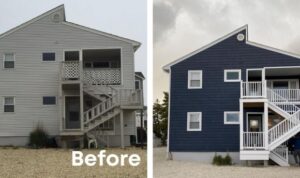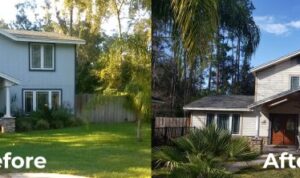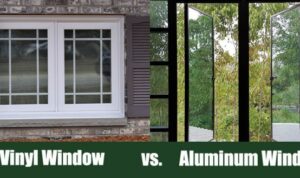Delving into architecture and interior design, this introduction immerses readers in a unique and compelling narrative. From the rich history of architectural styles to the innovative sustainable practices shaping modern design, this topic is a fascinating journey through the realms of creativity and functionality.
As we delve deeper, we will uncover the fundamental elements that define architectural structures and the intricate components of interior design that breathe life into spaces, making them both aesthetically pleasing and functional.
History of Architecture and Interior Design
Architecture and interior design have evolved significantly throughout history, reflecting the cultural, social, and technological advancements of different eras. From ancient civilizations to modern times, various architectural styles and interior design trends have emerged, influenced by artistic movements, religious beliefs, and practical needs.
Ancient Architecture
Ancient civilizations like the Egyptians, Greeks, and Romans laid the foundation for architectural principles still used today. The grandeur of the pyramids, the symmetry of Greek temples, and the engineering marvels of Roman aqueducts showcase the innovation and mastery of ancient architects.
Medieval and Gothic Architecture
During the Middle Ages, Gothic architecture flourished, characterized by pointed arches, ribbed vaults, and flying buttresses. Cathedrals like Notre Dame in Paris exemplify the verticality and intricate ornamentation of this period, reflecting the spiritual devotion of the time.
Renaissance and Baroque Design
The Renaissance brought a revival of classical ideals, focusing on proportion, symmetry, and humanism. Buildings like the St. Peter's Basilica in Rome epitomize the grandeur and harmony of Renaissance architecture. The Baroque period followed, emphasizing drama, movement, and emotion in design.
Modern Architecture and Interior Design
The Industrial Revolution and technological advancements of the 19th and 20th centuries propelled architecture and interior design into new territories. Modernist architects like Le Corbusier and Frank Lloyd Wright embraced functionality, simplicity, and innovation, influencing the sleek and minimalist interiors of the era.
Contemporary Trends
In the contemporary design landscape, a mix of styles and influences coexist, from sustainable architecture to postmodern eclecticism. The rise of smart homes, green buildings, and adaptive reuse projects reflects the current emphasis on environmental consciousness and flexibility in design.
Elements of Architecture and Interior Design
Architecture and interior design are both shaped by fundamental elements that play a crucial role in defining the structure and functionality of spaces. Let's delve into the essential components that make up these disciplines and explore how they contribute to the overall design.
Architectural Structures
When it comes to architecture, several key elements define the built environment. These elements include:
- Form: The overall shape and structure of a building, which can vary from simple to complex designs.
- Space: The utilization of both interior and exterior spaces to create functional and aesthetically pleasing environments.
- Light: Natural and artificial lighting play a significant role in illuminating spaces and enhancing the ambiance of a structure.
- Materials: The choice of materials, such as concrete, steel, glass, or wood, impacts the durability, aesthetics, and sustainability of a building.
- Texture: The tactile quality of surfaces within a structure that adds depth and visual interest to the design.
- Color: The use of color schemes influences the mood, perception, and overall design concept of a building.
Interior Design Components
In contrast, interior design focuses on creating functional and visually appealing spaces within architectural structures. The essential components of interior design include:
- Layout: The arrangement of furniture, fixtures, and spatial organization to optimize usability and flow within a space.
- Furniture: The selection of furniture pieces that complement the design aesthetic and serve practical purposes within a room.
- Accessories: Decorative elements such as artwork, rugs, and lighting fixtures that add personality and style to a space.
- Color Palette: The cohesive selection of colors for walls, furniture, and accessories to create a harmonious and balanced interior design scheme.
- Textiles: The use of fabrics for upholstery, curtains, and cushions to introduce texture, warmth, and comfort into a room.
- Finishes: The final touches, such as flooring, wall treatments, and decorative details, that complete the look and feel of a space.
Use of Materials in Architecture and Interior Design
While architecture and interior design both utilize materials to bring their designs to life, the approach to material selection differs between the two disciplines
On the other hand, interior design focuses more on aesthetics, texture, and tactile qualities of materials to enhance the visual appeal and comfort of interior spaces. Both fields consider the properties and characteristics of materials carefully to achieve the desired design outcome.
Sustainable Practices in Architecture and Interior Design

Sustainable design principles play a crucial role in contemporary architecture and interior design, aiming to reduce the environmental impact of buildings while creating healthy and efficient spaces for occupants.
Eco-friendly materials and technologies are increasingly being incorporated into sustainable architecture and interior design projects. These include:
Use of Recycled Materials
- Recycled glass countertops
- Reclaimed wood for flooring and furniture
- Recycled metal fixtures and fittings
Energy-Efficient Systems
- Solar panels for renewable energy generation
- LED lighting for reduced energy consumption
- High-performance insulation for improved thermal efficiency
Green Roofing and Walls
- Living green roofs for natural insulation and stormwater management
- Vertical gardens for improved air quality and aesthetics
Water Conservation Strategies
- Low-flow plumbing fixtures to reduce water usage
- Greywater recycling systems for irrigation purposes
- Rainwater harvesting for non-potable water needs
These sustainable practices not only help in reducing the carbon footprint of buildings but also contribute to creating healthier indoor environments and reducing operational costs in the long run. The integration of eco-friendly materials and technologies enhances the overall aesthetic and functionality of a space, providing a harmonious balance between design, sustainability, and performance.
Spatial Planning and Layout
Spatial planning plays a crucial role in architecture and interior design projects, determining the functionality and efficiency of the space. It involves the strategic organization of elements within a given area to optimize usability and flow.
Optimizing Space Utilization
- Utilize multifunctional furniture: Choose pieces that serve more than one purpose to maximize space.
- Utilize vertical space: Install shelves or storage units to make use of vertical space.
- Open floor plans: Create open layouts to make rooms feel larger and more spacious.
- Use light colors: Lighter colors can make a space feel more open and airy.
Role of Ergonomics
Ergonomics is essential in designing comfortable and efficient interior spaces. It focuses on creating environments that are well-suited to human needs and behaviors, promoting health, safety, and productivity.
Ergonomics ensures that furniture and layout support natural body movements and postures, reducing strain and discomfort.
Closing Summary
In conclusion, architecture and interior design are not just about buildings and spaces; they are a reflection of our culture, values, and aspirations. By understanding the evolution, elements, sustainable practices, and spatial planning in design, we gain a deeper appreciation for the artistry and innovation that shape our built environments.
Top FAQs
What are some key architectural styles throughout history?
Key architectural styles include Gothic, Baroque, Neoclassical, Art Deco, and Modernism, each reflecting the design trends of their respective eras.
How do sustainable practices impact architecture and interior design?
Sustainable practices focus on reducing environmental impact, utilizing eco-friendly materials, and enhancing energy efficiency, leading to more responsible and innovative design solutions.
What is the significance of spatial planning in design projects?
Spatial planning is crucial for optimizing functionality, circulation, and user experience within a space, ensuring that every element serves a purpose and contributes to a cohesive design.









